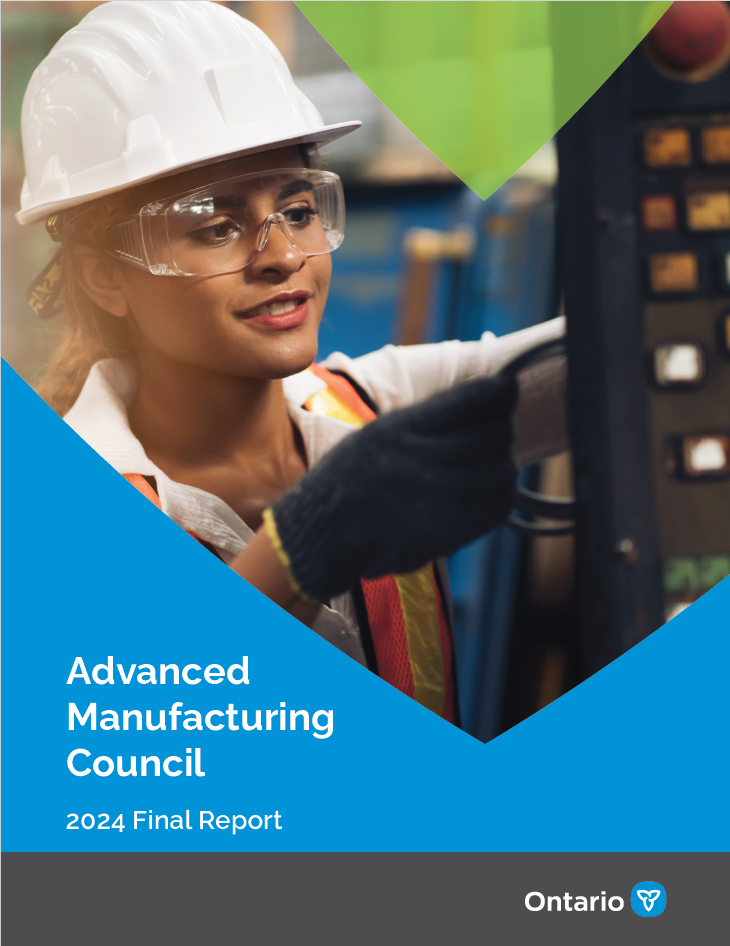Ontario Advanced Manufacturing Council’s Final Report urges actions to close productivity gap in Ontario manufacturing sector
October 09, 2024
The Chemistry Industry Association of Canada (CIAC) welcomed the Ontario Advanced Manufacturing Council’s Final Report released today.

Made up of leaders from several of Ontario’s advanced manufacturing sector, the provincial government established the Advanced Manufacturing Council in 2023 to provide insights and advice on how to strengthen the sector’s long-term competitiveness and secure its place as a global leader. CIAC’s President and CEO, Bob Masterson was appointed as a member of the Advanced Manufacturing Council in 2023.
“It was an honour and a privilege to work with the knowledgeable and dedicated colleagues from the Council from industry, labour, academia and the officials from the Ontario Ministry of Economic Development and Job Creation. The recommendations in the report are challenging, but necessary for Ontario to return to prosperity as a leading manufacturing jurisdiction,” said Mr. Masterson.
The report outlines that Ontario is recognized as a prime destination for establishing next generation manufacturing projects due to its highly educated workforce, competitive corporate tax rates, supply of reliable and clean electricity, and proximity to North American markets.
Despite these strengths, the future prosperity of Ontario’s manufacturing sector is facing numerous threats, as global competitors have progressed faster in improving their productive capacity, researching and adopting new technologies, and training their workforces.
For Ontario to close this productivity gap, the report outlines 16 recommendations under four key themes for bold and sustained government action, including:
- Accelerating technology development and adoption to improve productive capacity, applied research and development, and innovation across the sector.
- Encouraging investment and boosting exports by focusing on attracting and retaining strategic projects, supporting the availability of industrial land, and capitalizing on the benefits of existing trade agreements.
- Building a green economy by leveraging Ontario’s clean energy advantage and supporting the greening of traditional manufacturing clusters.
- Investing in the jobs of the future by expanding interest in manufacturing careers and ensuring K-12 through to post-secondary education focuses on developing the skillsets for tomorrow’s workforce.
“I look forward to continuing to work with the Ontario government and my colleagues on the Council to further improve the future prosperity of Ontario’s manufacturing sector,” said Mr. Masterson.





